This past October, the zZounds crew had the opportunity to tour the PRS factory in Stevensville, Maryland, about an hour outside Baltimore. During our walkthrough, we received a deep history lesson on the company, factory operations, and Paul Reed Smith himself. We experienced every part of the build process associated with crafting a PRS guitar, from wood drying, to neck and body assembly, the finishing process, and everything in between. Through each part of the process, one thing was abundantly clear: each and every builder values quality above all else. So, take a deep dive with us in our PRS factory tour recap!
The Beginning Of The PRS Factory
In 1985, Paul started the first PRS factory, which was a small room where he hand-built each PRS guitar. He spent much of that decade driving up and down the east coast looking for interested investors for his new guitar company. Persistence paid off, and as demand grew, that one-room factory would need to expand into a full-blown facility. In 1996, the PRS operation grew into what would become the 20,000 square foot facility it is today. Interestingly enough, you can actually see the physical line dividing the original factory from the expanded facility. It was like looking at a subtle, but very literal piece of history!
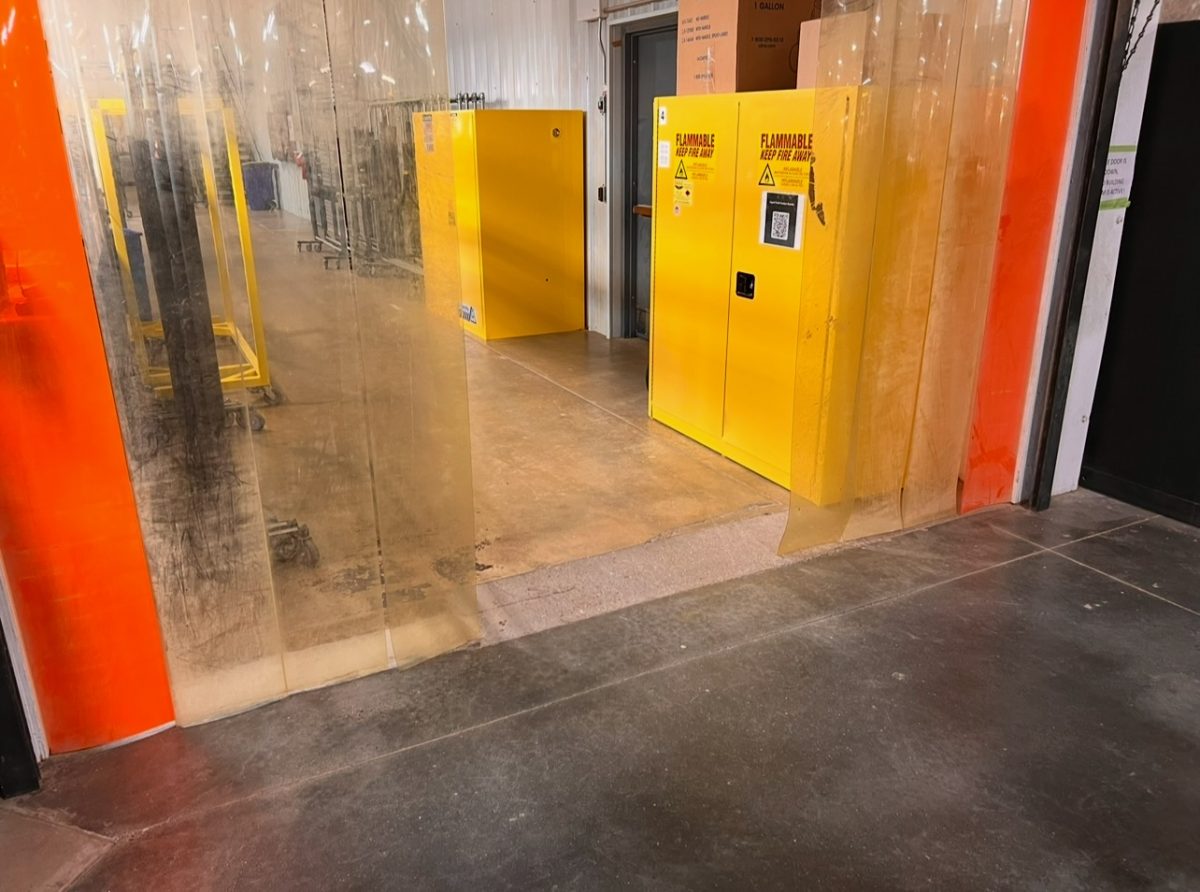
Wood Drying
Before we laid our eyes on the actual build process, we stopped by the wood drying section, where pallets of wood planks sat drying in preparation to be carved into their respective body shapes. These wood planks sit for two weeks in a climate-controlled area that consistently stays at 72 degrees. Interestingly enough, the wood grain patterns of a PRS guitar are a result of “stretch marks” appearing from wood growth. This organic pattern formation plays an important role in helping define the mesmerizing visual characteristics of a PRS guitar.
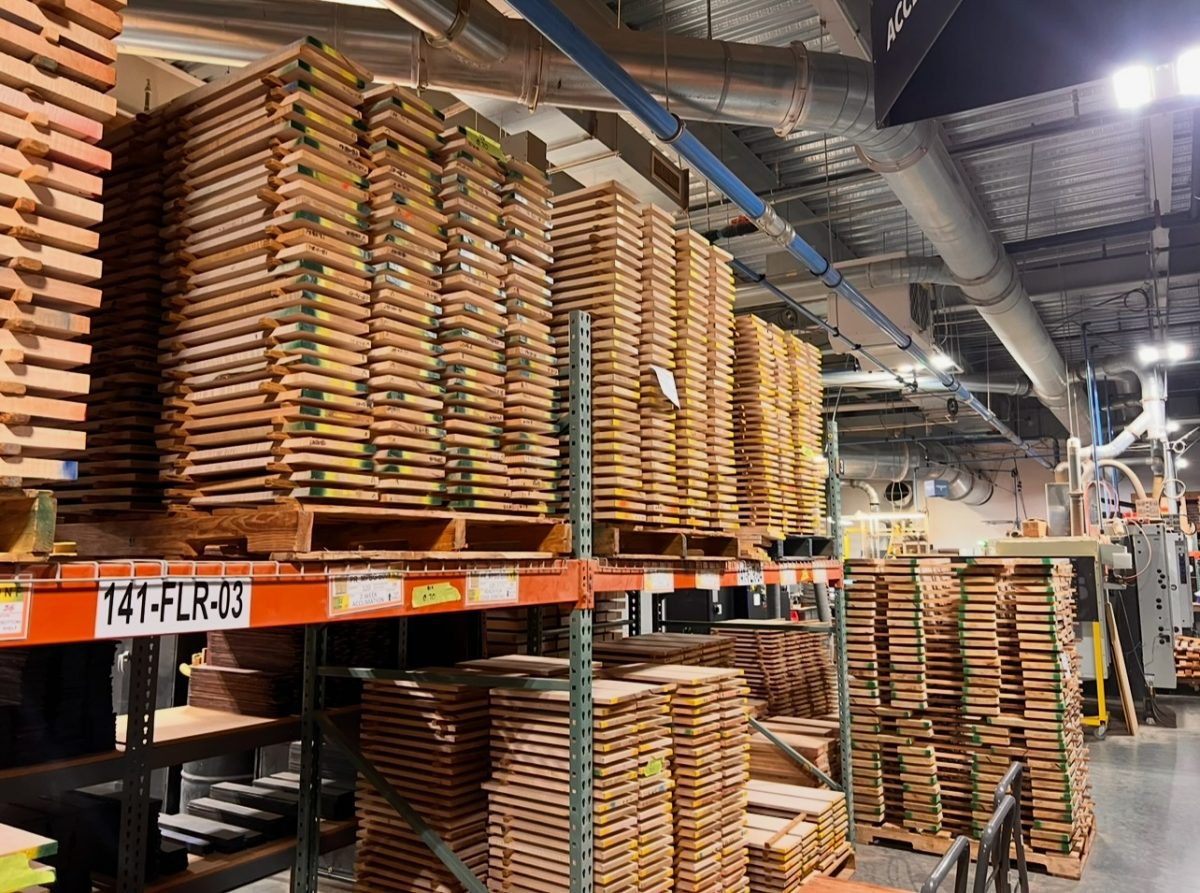
Walking The PRS Factory Floor
At this point, we were ready to walk the factory floor. The first stop we made in the building process was in body carving. The task of body carving is carried out by machines, which are preprogrammed to cut exact body shapes. The body carving machines, like many others throughout the PRS factory, are designed to mimic human movement. This adds an extra layer of precision while retaining an authentic human feel.
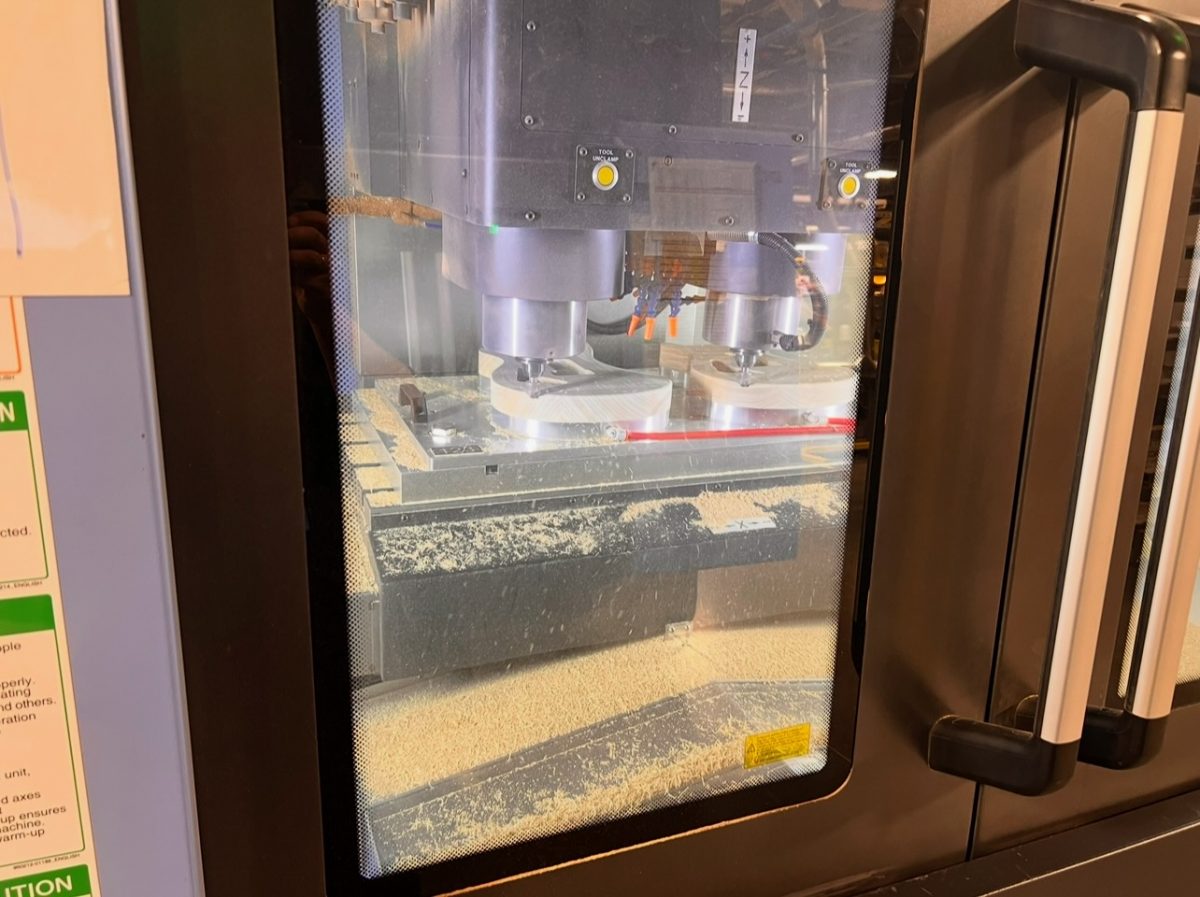
Next, we moved on to Neck and Body Assembly, which is dubbed the “NBA” process at the factory. PRS puts extra care into crafting the necks to ensure superb playability. The entire neck building process, from the initial wood cut to the finished neck complete with its truss rod, frets, and fretboard takes a total of 18 days to complete. This process made it clear that PRS is happy to take their time if it means creating a superior feeling neck. When the neck and body assembly is complete, the builder responsible for the completion of the process will sign their name in one of the pickup cavities to mark their craftsmanship.
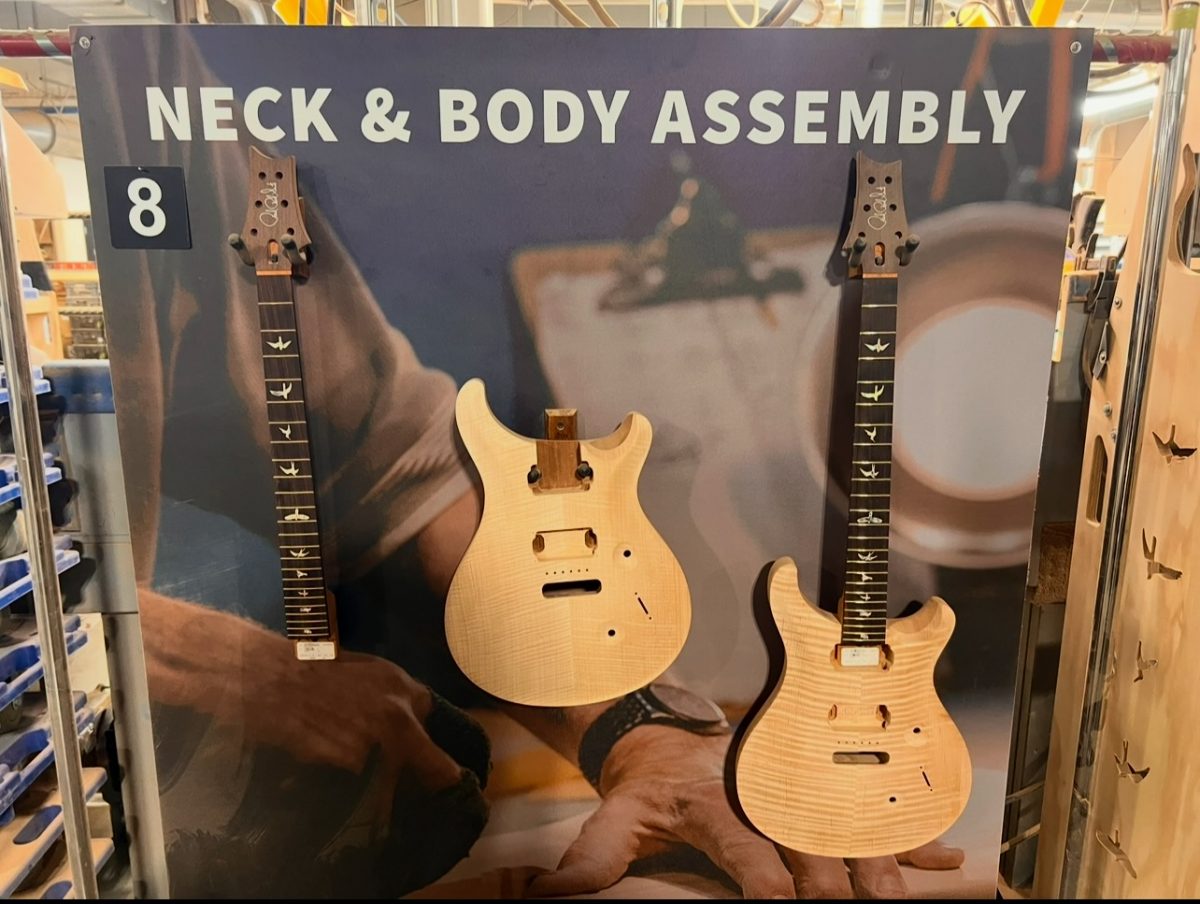
Finishing, Painting and Electronics
The finishing and painting process are delicate tasks; we witnessed each worker take great care to ensure proper results. Painting is completed in a small, closed-off room by a handful of specialists. The guitars are hung upside down from ceiling hooks to keep the neck out of the way of the staining. First, the base coat is added, then a second top coat is added which is then buffed to achieve sheen. An interesting fact about the painting process is that each painter works to get as many colors out of one color as possible — resulting in a vibrant finish with multiple color variants. From here, the finish staining process is completed to fill in every grain on the body. This process is completed twice due to how thin the finishes on PRS guitars are.
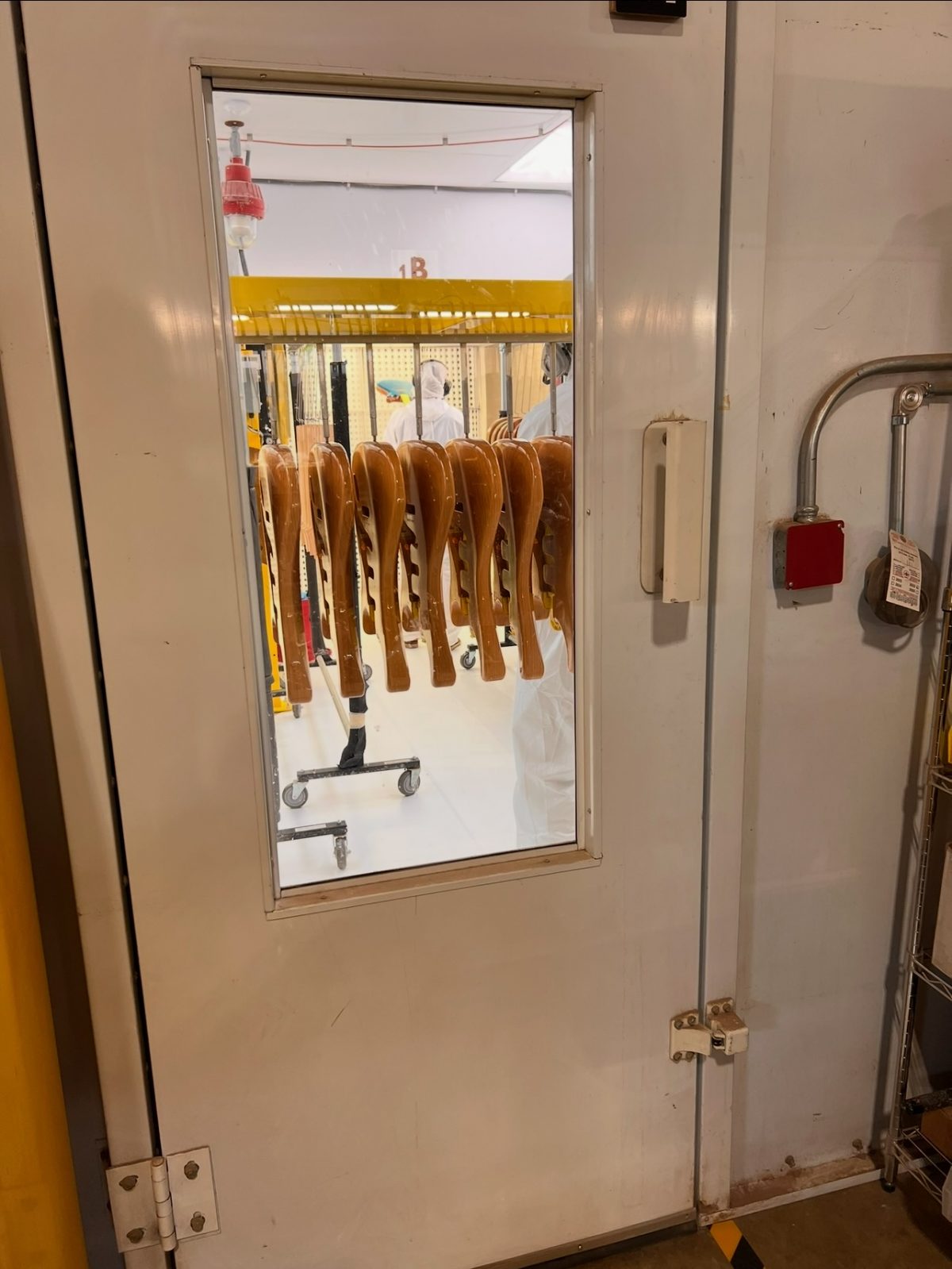
The final part of the build process we experienced was with the constructing of pickups and pots. This process is completed by a handful of specialists working in a small room separated from the factory floor. Funnily enough, the room where the electronics are built was once an office for Paul himself! Witnessing the craftsmanship that each worker displayed while building these electronics was really impressive and inspiring to us as musicians.
Wrap-Up
During our tour, PRS reps told us that every worker in the factory is trained to the level of a quality control specialist — an approach that ensures each and every part of the build process is handled with the utmost care. Walking the floor, that care was on display everywhere we looked, making evident the dedication each team member has for helping maintain PRS’ level of excellence. All in all, it was a surreal experience, and one we won’t soon forget. Thank you to Paul, Jim, and the rest of the PRS team for having us at the factory!

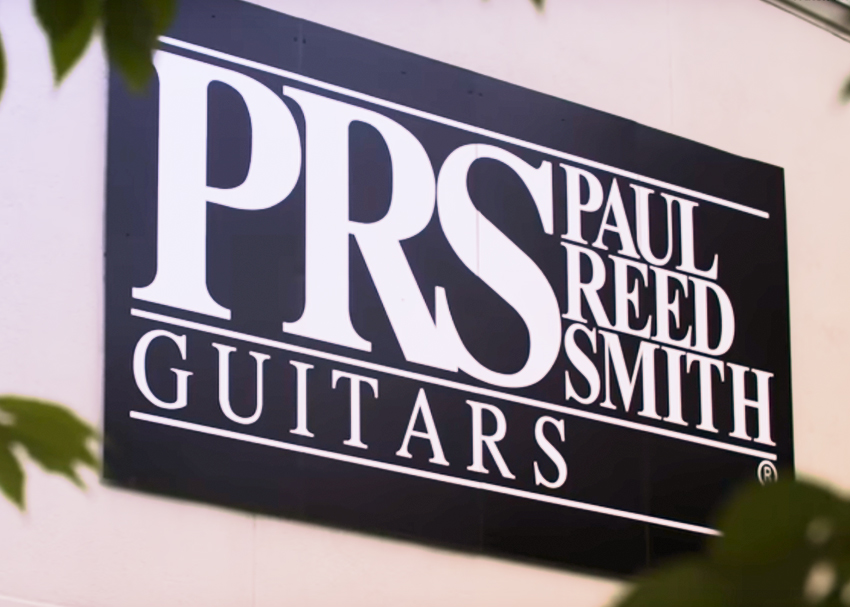


Leave a Reply